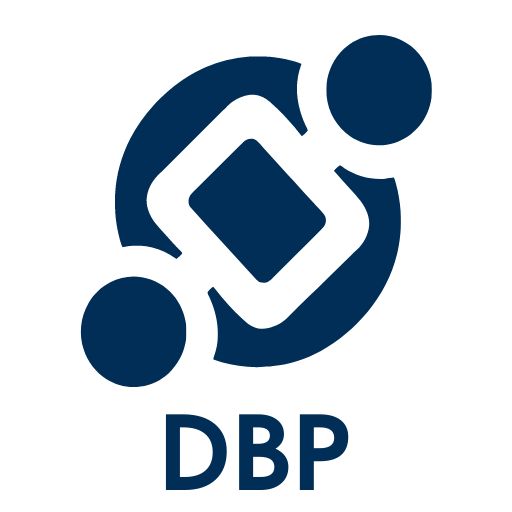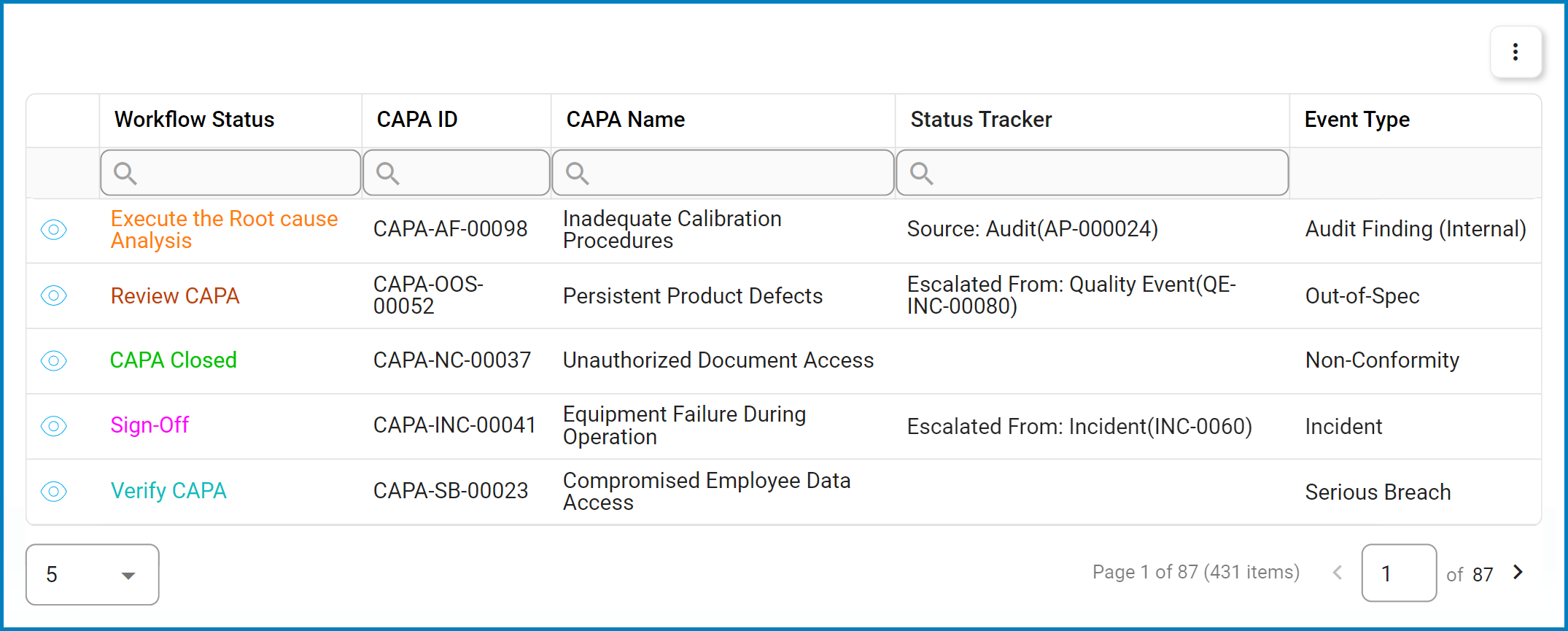In this module, users can access a list of all CAPAs created using the application.
Search Panel
All fields inside the search panel act as search boxes. Any value inputted inside them will be used as search criteria to filter and retrieve data from the grid, if possible.
- CAPA ID: This is a text field that allows users to filter by CAPA ID.
- CAPA Name: This is a text field that allows users to filter by the name of the CAPA.
- Event Type: This is a single-select dropdown field that allows users to filter by event type.
- Business Division: This is a single-select dropdown field that allows users to filter by business division.
- Business Line: This is a single-select dropdown field that allows users to filter by business line.
- Filter: This button filters the results according to the entered search criteria.
- Clear Filter: This button clears the filters that were used in the previous search and allows users to again view the full data set.
Grid
Inside the grid, CAPAs are organized by values derived from the CAPA workflow.
- View (
): This button allows users to view a CAPA.
- In viewing mode, users cannot make any modifications. They can, however, download attached files, view details in supplemental forms, and access/download any available templates.
- Status Tracker – Feature Highlights
The Status Tracker column provides visibility into the phases of issue escalation across various QMS applications, including Audit, Quality Event (QE), CAPA, and Incident.
The column displays:
- Origin of Escalation: Indicates where the issue started (e.g., Audit, QE, or Incident).
- Destination of Escalation: Indicates where the issue has been escalated to (e.g., CAPA).
- Current Phase: Indicates the current phase of the issue within the escalated application.
- Associated IDs: Provides relevant IDs for quick reference, such as Audit ID or CAPA ID.
To simplify tracking, the Status Tracker consolidates workflow stages from the Incident, QE, and CAPA applications into broader phases, allowing users to grasp the overall progress without being overwhelmed by granular details.
The table below outlines each application’s workflow stages and the phases they fall under in the Status Tracker:
Incident Phases Incident Stages QE Phases QE Stages CAPA Phases CAPA Stages Investigating Incident Create New Incident;
Review Incident Report;
Modify Incident ReportAnalyzing Issue Review the Issue;
Modify Quality Event;
Gather DetailsEvaluating CAPA (RCA) Review CAPA;
Modify CAPA (1);
Execute Root Cause Analysis;
Verify CAPA;
Modify CAPA (2)Execute Action Execute the Action Containment Contain/Correct Issue Execute Action Execute the Action Reviewing Incident Resolution Check Effectiveness & Approve Report Analyzing if CAPA Needed Review the Issue – Needs CAPA? Reviewing CAPA Resolution Check Effectiveness & Approve N/A Issue Escalated to QE or CAPA N/A Send to CAPA (QE Closed) CAPA Sign Off Sign Off Execute Action Execute the Action CAPA Closed CAPA Closed Reviewing QE Resolution Check Issue Correction QE Closed Issue is Contained;
No Issue





Post your comment on this topic.